Discover the tech that promises shared sound for everyone
If you’ve spent any time recently eyeing up a new pair of headphones, you might’ve spotted one or two acronyms that weren’t familiar: Auracast Bluetooth, a broadcast feature inside Bluetooth LE Audio broadcast that promises shared sound for everyone This wireless audio technology is designed to make your devices sound more useful in public and private spaces. But what is it, and should you be seeking it out?
The new take on Bluetooth transmission is a step up from the basic pairing used by many cheaper alternatives. It uses similar tech, but neither the name nor the profile are guaranteed to be compatible with your devices. Here’s what you need to know about Auracast, and why it matters to people who want easier group listening.
What is Auracast?
Nobody seems to know what Auracast really stands for, but the most likely explanation is that it describes audio casting through Bluetooth LE. But its creator, the Bluetooth SIG, has never confirmed or denied that, so it’s all a bit of a mystery. It could be Aura Cast, Audio Relay Casting, or something else entirely.
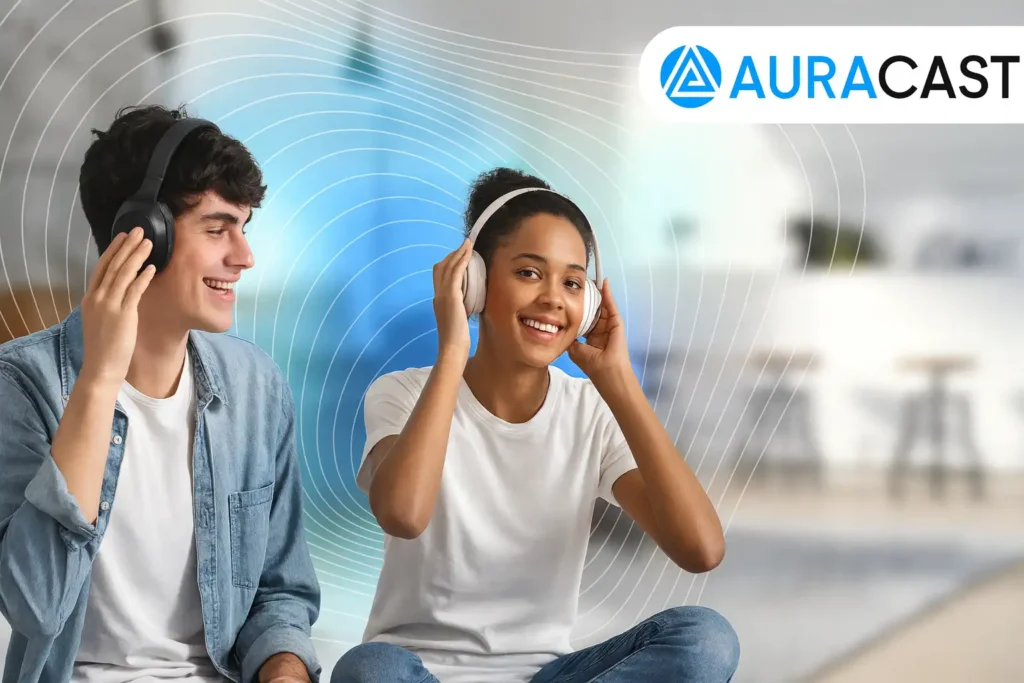
Whatever it actually stands for, the important bit is Auracast Bluetooth was created to deliver Bluetooth LE Audio broadcast streams without pairing. It’s built on the Public Broadcast Profile, making it one of the most important features in Bluetooth LE Audio (5.2+).
As you’d expect from a standard developed by the Bluetooth SIG, you’ll find Auracast support in new Android smartphones, hearing aids from ReSound and Jabra, and in upcoming TVs. Many other firms support Auracast too, but if you want it on an iPhone you’re out of luck. Apple devices don’t currently support Auracast and aren’t likely to.
The Bluetooth SIG has published a list of Auracast-compatible products here.
How Does Auracast Work?
Auracast how it works is simple: it uses transmitters, receivers and assistants inside Bluetooth LE Audio. A phone, laptop or TV can create a Bluetooth broadcast audio stream, and nearby earbuds, headphones or hearing aids can pick it up directly, just like joining a Wi-Fi network.
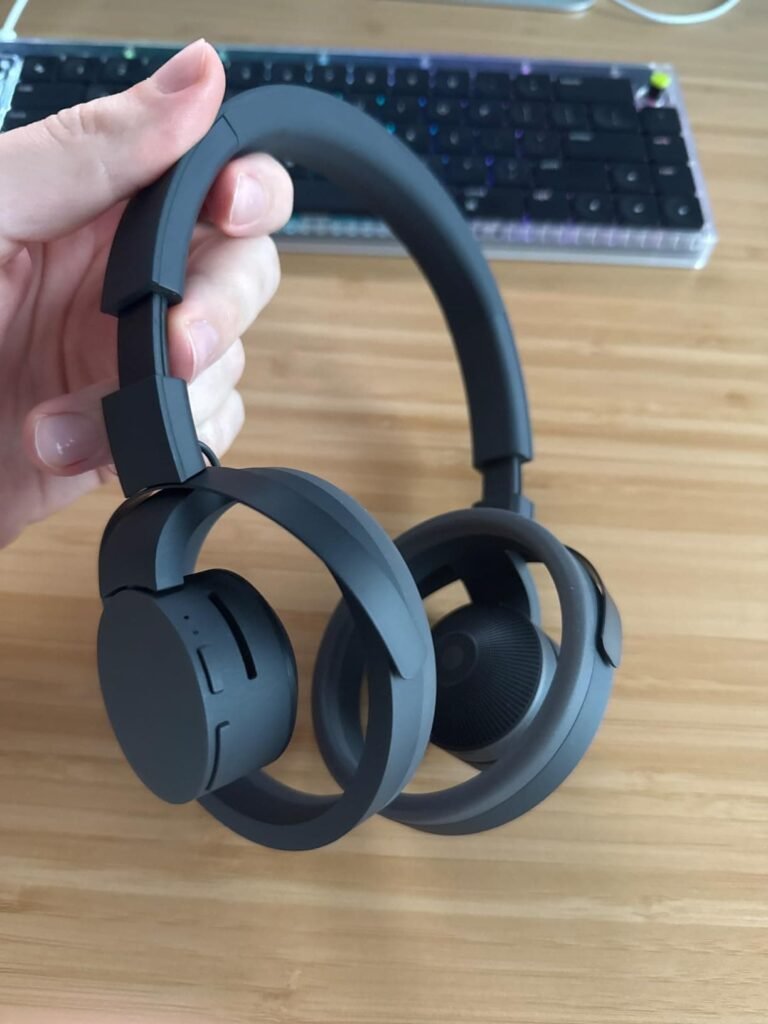
Auracast is officially part of Bluetooth LE Audio, so any manufacturer can choose to enable it in their device’s operating system – but not all of them do. This is also true for other parts of LE Audio.
What’s a broadcast?
A broadcast is like a codec in Bluetooth – it describes a technology that makes connections easier and faster without pairing. With Auracast, one transmitter can be shared with unlimited receivers instead of just one or two.
Key Benefits of Auracast
Auracast stands for broadcast audio that enables easier sharing. It was created as an alternative to classic Bluetooth pairing and designed to scale in public and private spaces. Venues, classrooms, airports and stadiums can all use Auracast to reach more listeners at the same time.
Auracast is officially part of Bluetooth LE Audio, so it can be enabled by any manufacturer. But not all devices will support it at launch. This is also true for other profiles in LE Audio.
What’s a benefit?
A benefit is a feature that makes a connection easier to use or more useful in practice. With Auracast, the main benefits are the ability to join without pairing, the ability to connect unlimited receivers, and the ability to support hearing aids and accessibility systems directly.
With a normal Bluetooth connection, audio is transferred to just one or two devices. That limit made shared listening awkward. Auracast benefits become clear here, because the new Bluetooth broadcast audio use cases allow unlimited listeners to join the same stream without pairing, making group listening simple in public or private spaces.
Practical Use Cases of Auracast
Auracast is designed to deliver better audio sharing in real situations. While standard Bluetooth pairing is enough for one or two listeners, Auracast can scale to dozens or even hundreds. In the case of TVs, Auracast can deliver commentary in sports bars or pubs without external speakers. In the case of airports, it can deliver announcements in multiple languages at the same time.
Auracast in public spaces is where the feature feels most practical. In classrooms or lecture halls, one feed can go directly to every student’s device. Museums can provide tours that visitors join with their own earbuds instead of rental headsets. Stadiums like Taranaki can deliver commentary and audio description to Auracast hearing aids, making events more inclusive for people with hearing loss.
Or at least, it does if two other things are true. First of all, both the transmitter and the receivers need to have Bluetooth LE Audio with Auracast enabled. And secondly, the users need compatible devices to join. If one side supports Auracast but the other doesn’t, then the broadcast won’t be available.
Device Support & Compatibility
That very much depends on what you want to listen to and what you’ll be listening to it on. If you’ll be sitting at home streaming a live event from a TV with Auracast, or listening in a public space with compatible earbuds, then yes, it’s absolutely worth having. It’s a bit like the difference between hearing sound through a single speaker and hearing it on your own headphones.
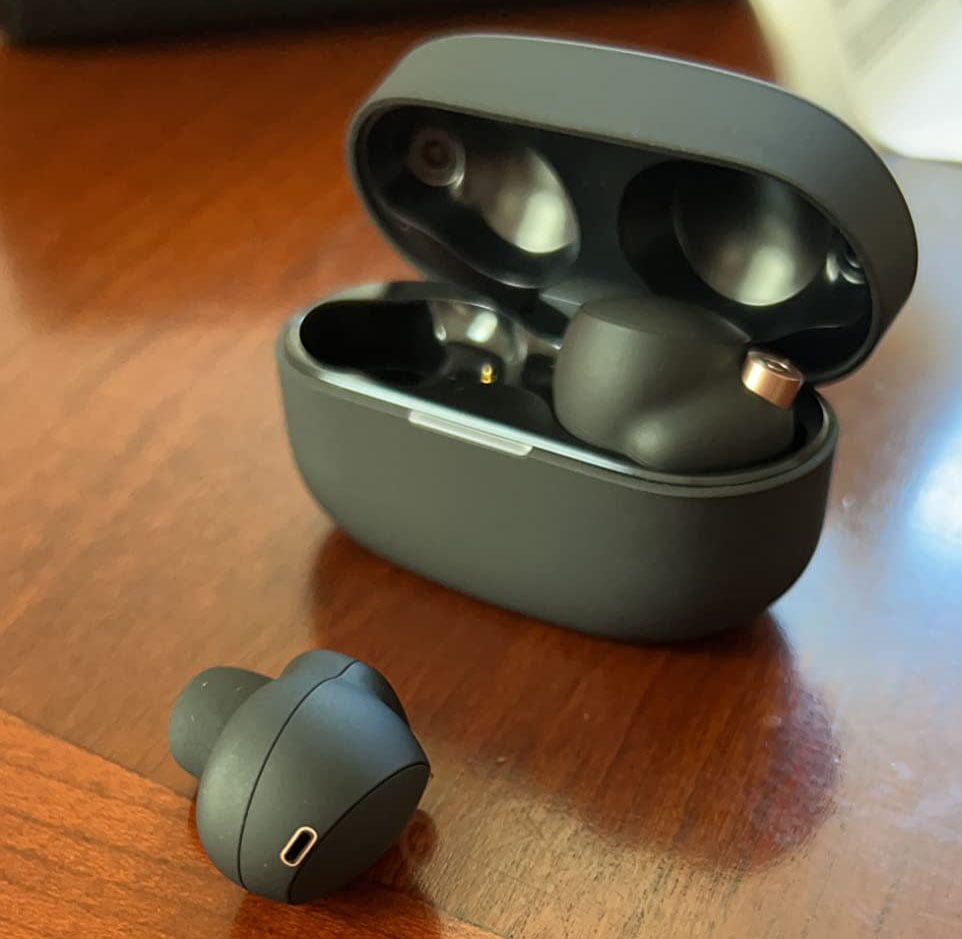
Auracast supported earbuds like the EarFun Air Pro 4 are starting to bring this to the budget range, and with Bluetooth 5.4 and upcoming firmware updates, they show how fast the new standard can move from premium to affordable.
On the other hand, if your device isn’t one of the Auracast supported devices, you won’t see the benefit. Even with Bluetooth LE Audio devices running version 5.2 or later, the Public Broadcast Profile must be present on both sides, or Auracast won’t appear as an option. That’s why support on Galaxy phones with One UI and hearing aids from ReSound and Jabra matters, and why Android 16 including native support is important for adoption.
Technical Considerations: Range, Latency & Audio Quality
Auracast range extends up to 100 meters in open spaces, a clear upgrade from classic Bluetooth. BLE Audio latency drops to around 20–30 ms, which makes video and audio playback feel smoother. Improvements in Auracast audio quality and efficiency also mean less battery drain compared to older profiles.
With a normal Bluetooth connection, delays are higher and battery life is shorter. Auracast improves efficiency, so devices use less power and last longer. That’s a clear change compared to classic Bluetooth.
Auracast vs Classic Bluetooth
Auracast vs Bluetooth is less about small changes and more about a different model. Classic Bluetooth is one-to-one, sometimes one-to-two, and always requires pairing. Auracast, built on LE Audio broadcast, is one-to-many, with no pairing at all, making it suitable for both small groups and crowded venues.
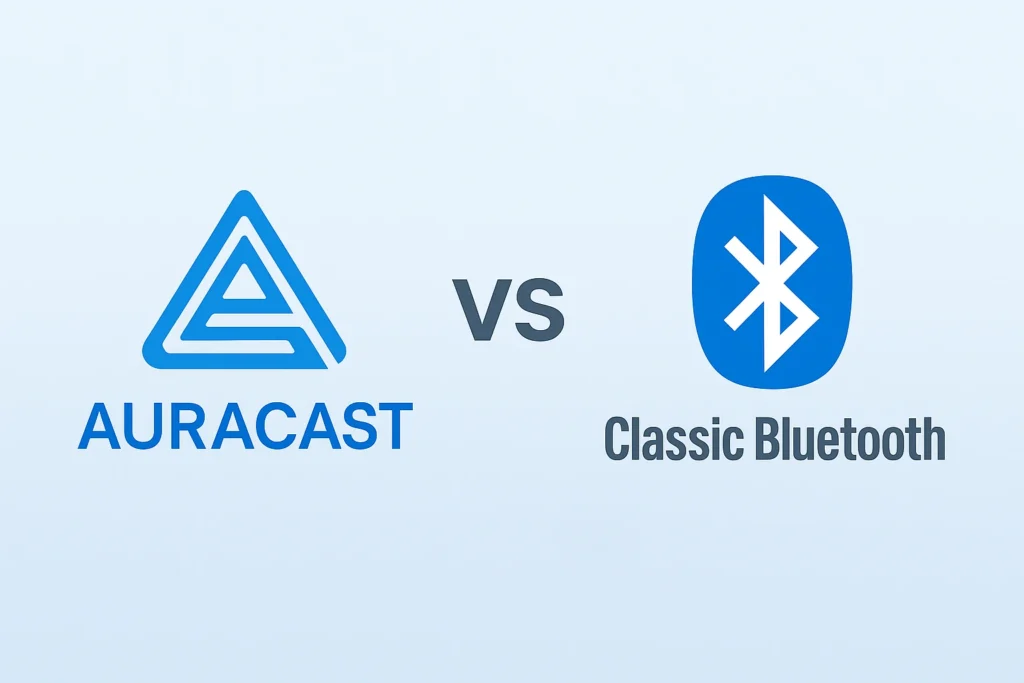
As you’d expect, the difference in use is significant. With Auracast, a single broadcast can be shared by unlimited receivers. With classic Bluetooth, only one or two listeners can connect. That makes Auracast more flexible for public and private spaces.
What’s Next? The Future of Auracast
Auracast future use is already visible in the roadmap for 2025 and beyond. More TVs, smartphones and audio devices are adding support. LG and Samsung 2025 models include Auracast, and Android 16 has native support, signaling fast Auracast adoption 2025.
That means Auracast adoption is increasing, and more manufacturers will follow. It’s not yet universal, but it is expanding fast.
Final Take: Why Auracast Matters
Auracast significance is clear: it represents a major shift in how Bluetooth audio can be shared. Instead of one-to-one connections, Auracast enables Bluetooth audio broadcasting that anyone nearby can join. That makes listening in public spaces easier, more inclusive, and more flexible.
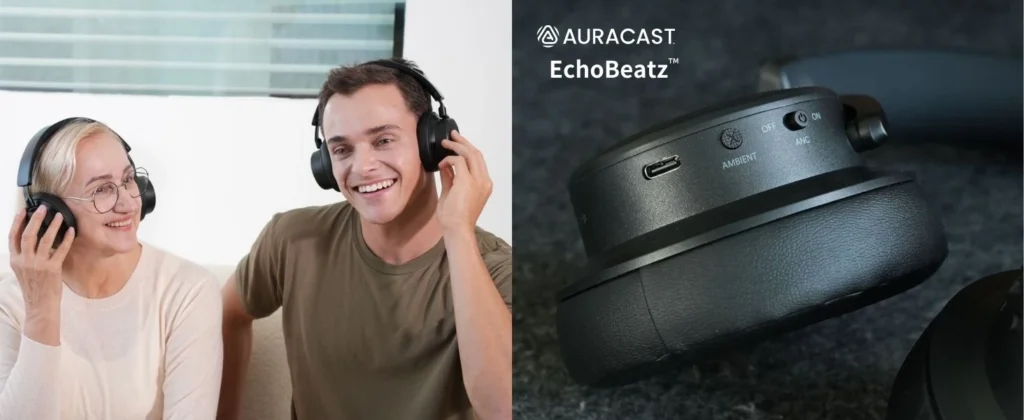
It’s not just a small update, but a new way of using Bluetooth. From sports bars to airports, classrooms to stadiums, Auracast is designed to make wireless audio work better for groups as well as individuals.
FAQs About Auracast
How do you connect to an Auracast broadcast?
You connect by scanning for available Auracast streams, just like choosing a Wi-Fi network. Some venues also provide QR codes for faster setup.
Is Auracast secure?
Auracast supports optional password protection. That means a broadcast can be public or private, depending on the setting.
Can any Bluetooth 5.2 device support Auracast?
Not automatically. Devices need to include the Public Broadcast Profile, and not all of them do. Firmware updates may add support in some cases.